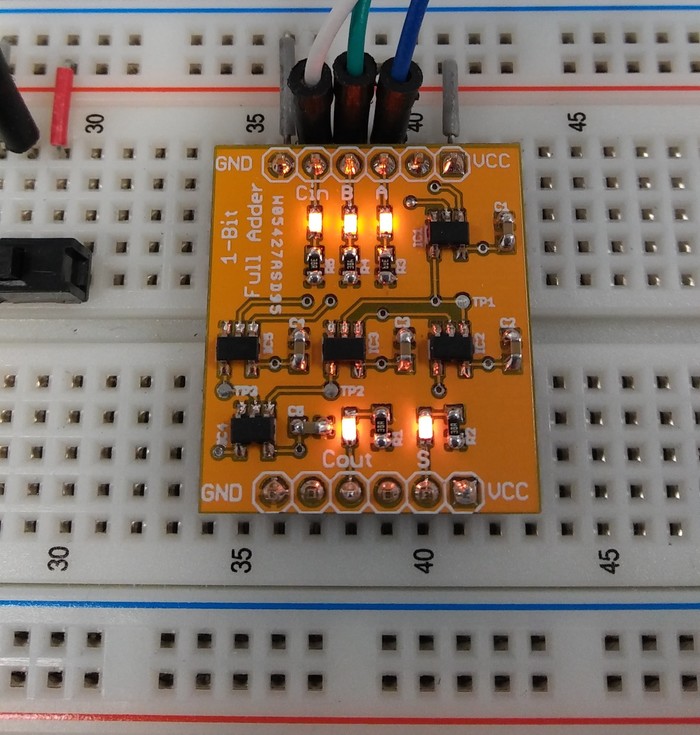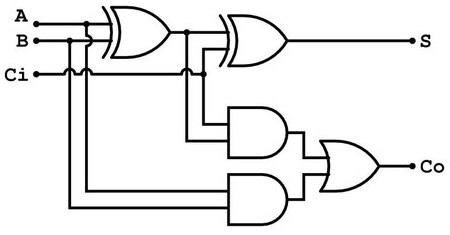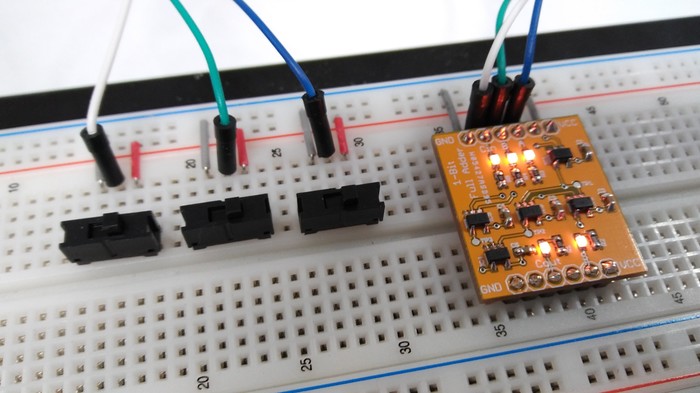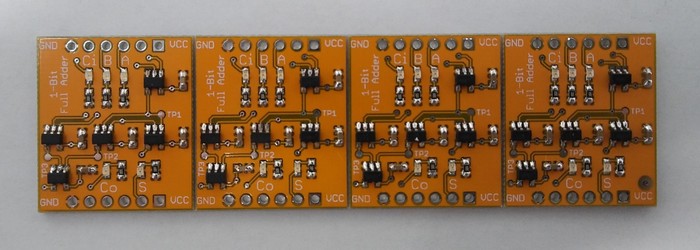One-bit full adder on unusual chips
- Transfer
- Tutorial

We are used to 14- and 16-pin microcircuits that contain several logic elements or a whole node - a counter, a decoder, ALU, etc. But earlier there were microassemblies and microcircuits that contained only one logical element. After long oblivion, they returned as five-pin SMD components. For example, 74LVC1G86 - exclusive OR, 74LVC1G08 - AND, 74LVC1G32 - OR. They made the proposed one-bit full adder.
His circuit:

It does not show 220-ohm resistors, LEDs that indicate the status of all inputs and outputs, 0.1 μF capacitors in parallel with the power supply. On the board for them, seats are provided. Files: gerberas , sources in Eagle format , scheme in PDF .
The input data for the full adder are two single-bit numbers and the transfer signal from the previous same adder, the output is one single-bit number and the transfer signal to the next same adder. Since there are three input signals, there can be eight combinations of them. The truth table of the device is replicated on many sites , where its various options differ from each other only in design.
The device board is designed so that pins can be soldered to it for installation on a breadboard. There you can place switches for supplying input signals:

But it is more interesting to make several boards:

By installing them on a breadboard and connecting the inputs and outputs of the transfer of adjacent adders, you will get a multi-bit full adder, which can then become part of the ALU.
